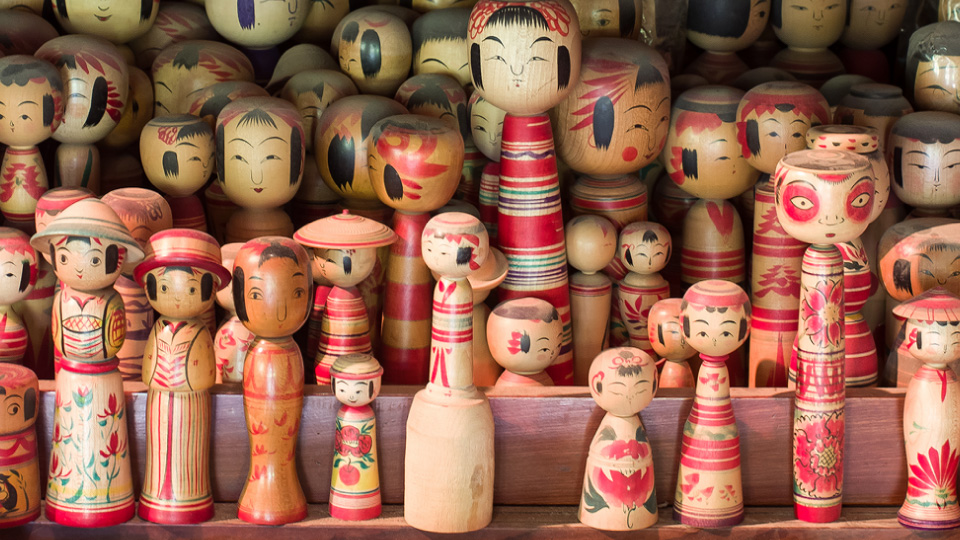Our amazement with new technology and its creations grows and grows, but our fascination with traditional products is everlasting, especially now that it is becoming such a rare sight. With the emergence of 3D printers and the like, it’s easy to forget what it really takes—time, practice and dedication—to make something by hand.
Take the little Japanese wooden doll, kokeshi. Originating in the Tohoku region of Northern Japan, these handmade wooden dolls were first crafted by woodworkers (kijiya, or kijishi) in the early 19th century as souvenirs for those visiting the region for onsen (hot spring) resorts.
A video produced by tetotetote (“hand and hand and hand”, literally translated), an organization highlighting the arts and crafts of Sendai, Japan, shows how these traditional wooden dolls are still made the same way two centuries later. In the video, craftsman Yasuo Okazaki turns a solid block into the head and body using just a handful of tools; just like magic, the high-speed wood lathe spins the figurines into life. Although there are about 10 different styles of kokeshi, the basic blueprint is always the same: an enlarged head and cylindrical body with no arms or legs. Okazaki’s “Naruko” style of making the dolls, which feature wide shoulders and a subtle hourglass shape, was passed down to him from his father.
Originally, the kokeshi dolls might have represented the wish for a healthy child, and it’s also possible that onsen visitors used them as massage tools. But these days, they even inspire the modern tech guys—the simpler, playful design of the Mii avatars on Nintendo’s Wii video game console is based on these traditionally designed figures.
Over the span of four minutes, the familiar form of the wooden doll emerges from the plain pieces of wood, and you can feel yourself stepping back just a bit in time as you watch the Sendai craftsman bring the kokeshi to life in his humble studio.
鳴子系こけし/こけしの岡仁 from dmp on Vimeo.
—Mona Neuhauss
Main image: Tetotetote/手とてとテ









